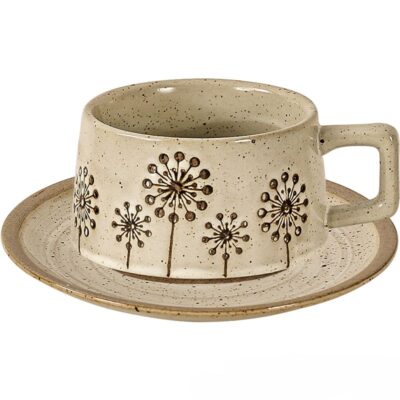For brands, cafés, and corporate merchandisers, creating a custom ceramic mug collection is more than printing a logo—it’s an end-to-end design and manufacturing process. The best results come from understanding how OEM projects evolve from dieline development to sampling and final production. Whether you’re launching your first custom collection or expanding your retail product line, partnering with an experienced custom ceramic mugs manufacturer can streamline every stage.
🧭 Step 1: Defining the Concept and Requirements
The process begins with a detailed creative brief. Buyers outline key specifications such as capacity (11oz, 15oz, or 17oz), shape (straight, curved, or stackable), glaze type, and brand tone. Dieline drawings—essentially technical blueprints—are created to capture logo positioning, handle alignment, and print safe zones.
Professional partners like Custom Ceramic Mugs Manufacturers can translate concept sketches into precise digital dielines, ensuring design feasibility before any molds are cut.
🧩 Step 2: Mold Creation and Prototyping
Once dielines are approved, the factory develops a 3D model and master mold. The prototype, also known as a “first article,” confirms ergonomics, balance, and handle comfort. Clients often review 2–3 iterations before confirming final tooling.
Modern ceramic workshops now use CNC and 3D scanning technology to replicate consistent shapes across thousands of pieces. This precision minimizes defect rates and guarantees uniformity in large-scale production.
🎨 Step 3: Glazing and Surface Treatment
The glaze defines the mug’s final personality. Whether glossy, matte, or reactive, it must align with brand aesthetics while meeting food-contact safety standards. Eco-conscious glazes—free of lead and cadmium—are now widely adopted, especially for export markets in the EU and North America.
Color matching follows strict Pantone codes, ensuring each batch visually aligns with brand identity. Reliable Ceramic Mug Manufacturers document every color recipe for repeatability across production cycles.
⚙️ Step 4: Branding Application Techniques
The logo or artwork application depends on design complexity and volume. Common OEM techniques include:
-
Decal transfer printing: Ideal for multicolor artwork and photographic designs.
-
Pad printing: Suited for curved surfaces and smaller runs.
-
Laser engraving: Elegant, permanent, and ideal for minimalist branding.
-
Heat transfer printing: Best for vivid colors and high-volume retail orders.
Each method has distinct durability and cost implications, so discussing expectations with the factory early avoids surprises later.
🧪 Step 5: Testing and Quality Validation
Before moving into mass production, pilot samples undergo rigorous testing—covering glaze adhesion, logo durability, dishwasher cycles, and thermal shock resistance. Many importers also request third-party inspections or certification (LFGB, FDA, or Prop 65).
Factories provide AQL inspection protocols, ensuring consistency across the production line. A strong OEM relationship emphasizes transparency—every test report, firing log, and color swatch contributes to long-term brand reliability.
📦 Step 6: Packaging Design and Pre-Production Approval
The dieline process doesn’t end with the mug itself—packaging is part of the brand experience. Factories often offer custom box dielines for gift packaging, sleeves, or retail display units. Mockups are reviewed to ensure structural safety during shipping.
Once approved, a pilot run of 100–300 units is produced under real manufacturing conditions. This stage allows both the buyer and factory to validate production timing, finish consistency, and artwork alignment before scaling up to full capacity.
🚀 Step 7: Scaling Up to Full Production
After the pilot run passes inspection, production volume is finalized according to forecast and market demand. Top factories can achieve daily outputs of 10,000–20,000 units, depending on complexity and glaze curing cycles.
At this stage, maintaining open communication is critical. Weekly progress updates and batch QC photos allow buyers to monitor their orders remotely, ensuring no deviation from the approved pilot standards.
🌱 Step 8: Post-Production Review and Continuous Improvement
Leading OEM programs include post-shipment audits to evaluate color accuracy, packaging integrity, and consumer feedback. This helps refine molds, adjust glaze recipes, and shorten future lead times.
Long-term buyers often benefit from loyalty-based cost reductions or priority sampling for seasonal launches. By documenting every OEM phase, brands can build a scalable and repeatable supply chain model.
🏁 Final Thoughts
A successful OEM ceramic mug program blends design creativity with manufacturing discipline. From dielines to pilot production, every stage demands attention to detail and transparent collaboration.
When working with an established custom ceramic mugs manufacturer, you’re not just buying mugs—you’re investing in brand consistency, quality assurance, and the capability to grow globally. With clear planning, technical drawings, and a reliable partner, your next collection can stand out in both quality and storytelling.









